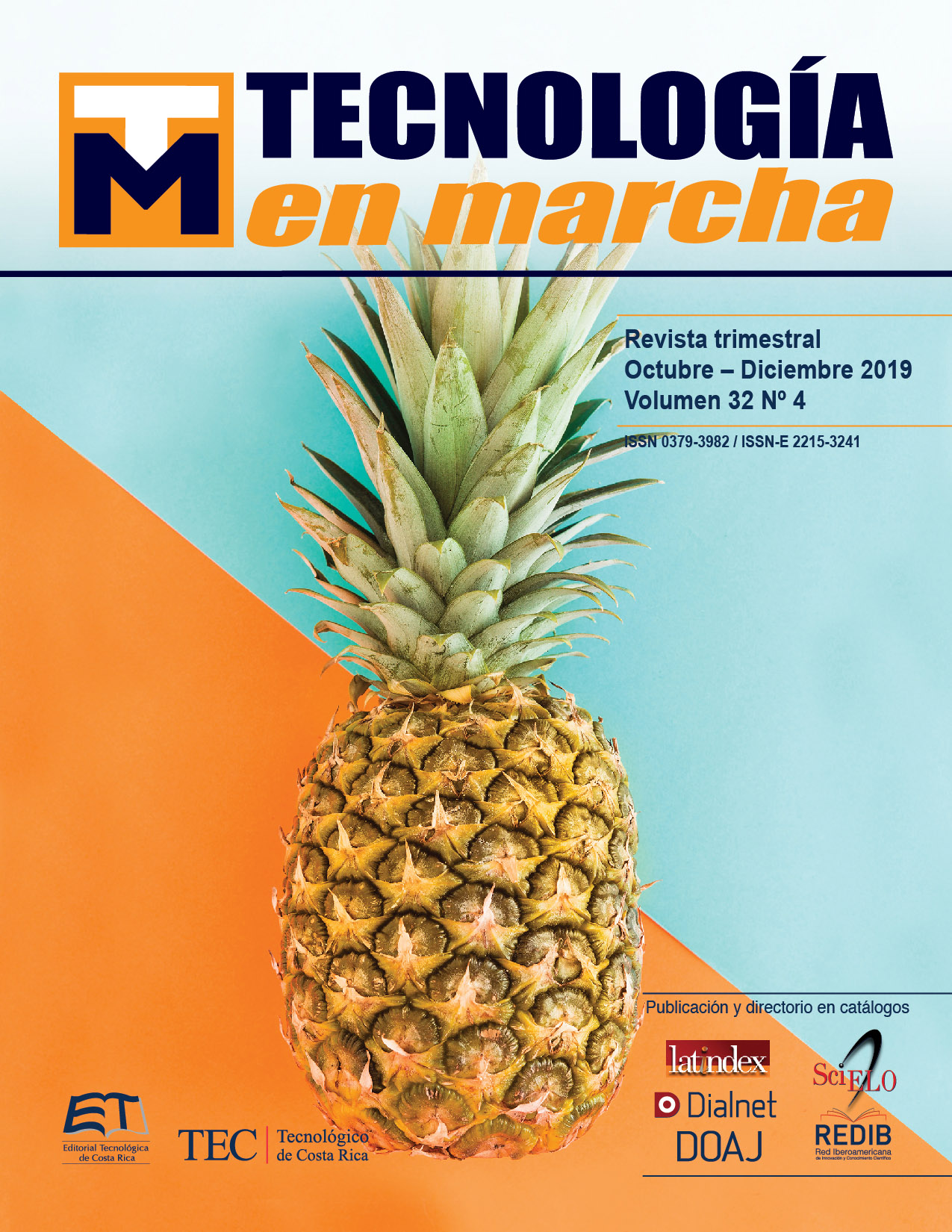Site-directed mutagenesis of the acidic interdomain linker FVIIIa3 of the coagulation factor VIII as a strategy to favor crystallization of its complexes with thrombin
Main Article Content
Abstract
Cardiovascular diseases are one of the most important causes of morbidity and mortality worldwide, which translates into a strong economic impact in the health sector. Factor VIII (FVIII) is an essential cofactor within the hemostatic processes involved in blood clot formation upon vascular damage. The proteinase thrombin is the most important physiological activator of FVIII, but the molecular mechanisms underlying recognition of FVIII by thrombin and the formation of the corresponding, transient Michaelis-Menten complexes are still only poorly understood. X-ray crystallography allows the resolution of the 3D structure of protein complexes, but a prerequisite is the crystallization of the sample to be analyzed. To grow crystals of the human FVIIIa3 (residues Glu1649-Arg1689) complexed with thrombin, site-directed mutagenesis was performed to generate the double-mutants FVIIIa3 (R1689Q, G1690P) and FVIIIa3 (R1689G, G1690P). Both fragments were overexpressed as heterologous proteins and purified with yields of ~1.5 mg per liter of bacterial culture. Availability of these recombinant proteins allowed in turn generation of FVIIIa3 (R1689Q, G1690P)•thrombin and FVIIIa3 (R1689G, G1690P)•thrombin complexes to perform extensive screenings of their solubility space. Altogether, a total of 630 to 820 different crystallization conditions were evaluated for both complexes. From these initial screen, some sort of crystalline precipitate was obtained in 22 conditions, 10 of which could be optimized to grow high-quality single crystals for subsequent X-ray diffraction analysis.
Article Details
Los autores conservan los derechos de autor y ceden a la revista el derecho de la primera publicación y pueda editarlo, reproducirlo, distribuirlo, exhibirlo y comunicarlo en el país y en el extranjero mediante medios impresos y electrónicos. Asimismo, asumen el compromiso sobre cualquier litigio o reclamación relacionada con derechos de propiedad intelectual, exonerando de responsabilidad a la Editorial Tecnológica de Costa Rica. Además, se establece que los autores pueden realizar otros acuerdos contractuales independientes y adicionales para la distribución no exclusiva de la versión del artículo publicado en esta revista (p. ej., incluirlo en un repositorio institucional o publicarlo en un libro) siempre que indiquen claramente que el trabajo se publicó por primera vez en esta revista.
References
[2] “Enfermedades cardiovasculares”, Organización Mundial de la Salud, 2014.
[3] B. Furie, B y B. C. Furie, “Mechanisms of thrombus formation”, N. Engl. J. Med., vol. 359, no. 9, pp. 938-949, 2008. https://doi.org/10.1056/NEJMra0801082
[4] P. J. Fay, “Activation of factor VIII and mechanisms of cofactor action”. Blood Rev., vol. 18, no. 1, pp. 1-15, 2004. https://doi.org/10.1016/S0268-960X(03)00025-0
[5] P. W. Rose et al., “The RCSB Protein Data Bank: views of structural biology for basic and applied research and education”, Nucleic Acids Res., vol. 43, no. D1, pp. 345-356, 2014. https://doi.org/10.1093/nar/gku1214
[6] B. Rupp, “Biomolecular crystallography: principles, practice, and application to structural biology”, Garland Science, 2009.
[7] E. Hernández-Carvajal et al. “Producción heteróloga y caracterización bioquímica del procoagulante humano Factor VIII para ensayos de cristalización de macromoléculas proteicas”, Tecnol. Marcha, vol. 29, no. 4, pp. 78-91, 2017.
http://dx.doi.org/10.18845/tm.v29i4.3039
[8] A. Rath et al., “Detergent binding explains anomalous SDS-PAGE migration of membrane proteins”, Proc. Natl. Acad. Sci. U.S.A., vol. 106, no. 6, pp. 1760-1765, 2009. https://doi.org/10.1073/pnas.0813167106
[9] Y. Shi et al., “Abnormal SDS-PAGE migration of cytosolic proteins can identify domains and mechanisms that control surfactant binding”, Protein Sci. vol. 21, no. 8, pp. 1197-1209, 2012. https://doi.org/10.1002/pro.2107
[10] G. C. Lander, H. R. Saibil y E. Nogales. “Go hybrid: EM, crystallography, and beyond”, Curr. Opin. Struct. Biol., vol. 22, no. 5, pp. 627-635, 2012. https://doi.org/10.1016/j.sbi.2012.07.006
[11] A. P. Turnbull y P. Emsley, “Studying protein-ligand interactions using X-ray crystallography”. Protein-Ligand Interactions: Methods and Applications, pp. 457-477, 2013. https://doi.org/10.1007/978-1-62703-398-5_17
[12] K. Nogami et al., “Thrombin-catalyzed activation of factor VIII with His substituted for Arg372 at the P1 site”, Blood, vol. 105, no. 11, pp. 4362-4368, 2005. https://doi.org/10.1182/blood-2004-10-3939

